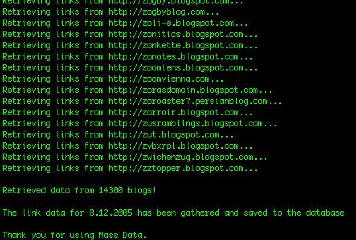Data Mining Software
Definition: Data mining is the term used to describe the technique
of automatically analysing large volumes of data in order to identify patterns
and associations within that data.
| |
|

|
Enterprises succeed or fail on the strength of the information they possess. In
order to successfully design, manufacture and market products and services an
enterprise needs accurate data to ensure that the job is managed correctly – and
to ensure that the strategies and objectives of the enterprise align with the
realities of the marketplace,
However, simply possessing large volumes of data is useless without the means to
draw valuable conclusions from it. Without methods of managing and analysing
data the information is nothing more than a drain on the resources of an
enterprise.
Applications of Data Mining
The 1990s saw great leaps in the development of data collection, storage and
processing techniques and technologies. These developments allowed enterprises
to gather and compile vast amounts of data related to sales,
customer behaviour
and the marketplace. However, all too often technology limitations meant that
these data resources were not adequately exploited.
In recent years there have been a renewed focus on the deep analysis of
business
data, encouraging enterprises to look past basic data and search for hidden
patterns and associations to aid in their business. A wide range of industries
now use data mining software to seek out and exploit unexpected trends.
- Customer Retention
The vast majority of medium to large enterprises collect data about their
customers for the purposes of
database marketing. However, only through the use
of data mining can this data become useful information. Through deep analysis of
the purchasing patterns of past customers it is possible to develop a
demographic model of those customers who can be expected to re-purchase in the
future. By directing advertising funds only towards those customers an
enterprise can increase return on investment (ROI) of the advertising budget and
build long term
client-customer relationships.
- Cross Selling Opportunities
In addition to analysing data about previous customers, enterprises can also
data mine customer databases purchased from other organisations in the hope of
identifying cross selling opportunities.
 For example, charity organisations such as Oxfam retain data about their
members and contributors. If another charity can get hold of that data it can be analysed to identify potential new contributors. For example, charity organisations such as Oxfam retain data about their
members and contributors. If another charity can get hold of that data it can be analysed to identify potential new contributors.
The possibilities are more diverse for commercial enterprises.
Databases of
purchasers of personal computers and games can be a gold mine for the
enterprises that develop software and games for those systems. By analysing data
and grouping customers by demographics such as age and gender, it is possible to
build highly targeted marketing databases of customers likely to purchase
software and games from various genres – shoot-em-ups for teens, office software
for students and adults and platform games for children of all ages. The
possibilities are endless.
- Identify Market Trends
Perhaps most importantly for enterprises developing
new products is the data
mining of economic and industry-specific data to identify market trends. This
sort of analysis is vital during the conception process of any new product, as
it allows enterprises to predict the demand for a product before it has even
left the drawing board.
The identification of market trends can also help enterprises innovate new
products that will ride the wave at the forefront of their industry. By gaining
insight into the way the wind is blowing, enterprises can avoid sinking capital
into products that are yesterday’s news – something that is especially important
in high-tech industries.
Pitfalls of Data Mining
While data mining may seem like the perfect data analysis solution – boiling
down massive volumes of data into valuable nuggets of information in the blink
of an eye – enterprises would do well to reserve their trust in the results.
The dark side of data mining is known as data dredging. Data dredging is the
pejorative term used to describe the use of data mining to find any possible
patterns in the data. Often the result of over-eager or poorly implemented data
mining techniques, data dredging may show patterns in the data that are
essentially meaningless.
For example, data dredging of a sales database may show that sales of chocolate
to blind people rose by 5% over the quarter. While this may indeed be the case,
it is not grounds to re-allocate an advertising budget to appeal to the blind
and partially sighted demographic. Instead, the conclusions should be retested
using a separate data set. If the pattern repeats itself on retesting then it
may be valid. If not, it is probably simply an anomaly.
Further information regarding data mining can be found at the Lawrence Livermore National Laboratory.
|

 For example, charity organisations such as Oxfam retain data about their
members and contributors. If another charity can get hold of that data it can be analysed to identify potential new contributors.
For example, charity organisations such as Oxfam retain data about their
members and contributors. If another charity can get hold of that data it can be analysed to identify potential new contributors.